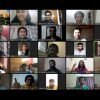Sports education during a global pandemic
Parminder Gill
As a young country with almost 600 million individuals under the age of 21 and about 150 million children in the public school system, ensuring access to transformation tools such as sports education is highly imperative. It is believed, that by following some of the practical measures outlined in this article (many of which are in line with the Key Messages and Actions for COVID-19 Prevention and Control in Schools released by UNICEF), we can ensure that children continue to enjoy sporting activities and stay healthy while at home.
The world is facing an unprecedented situation due to COVID 19, a “black-swan” event that has affected life in an unforeseen manner. The situation has ensured “lockdowns” in many countries, forcing people to adopt new social behaviors. Among the many implications is the abrupt closure of schools and social spaces that, thus far, enabled children and adolescents to participate in physical activity and sport.
Playing is a natural impulse of all children, and their chosen way to engage in a social context. This activity is used as an opportunity to further bond with their friends and peers. Depriving children of physical activity could result in a multitude of problems ranging from lower levels of physical dexterity & fitness to psychological or emotional dysfunction. In times of the outbreak, access to trusted sources of information, adoption of good hygienic practices and maintaining higher immunity levels (that result mainly from physical well-being) are key requirements to limit the spread of infection. The complete absence of physical activity & sport – both structured and unstructured – can prove to be catastrophic and leave our children highly vulnerable.
One of the ways (currently being tried) to engage children in physical activity during the outbreak – is through online content and sessions carried out through video conferencing technology. This could work very well for children and households that have existing internet access. But, what about the large majority of children in our country that are dependent on the public schooling system, and come from low income communities? In addition to the lack of reliable access to the internet, they also might not be familiar with these technologies. This would mean that the children from these societies would not be able to utilize these resources effectively. Moreover, even after schools reopen post the lockdown, the need for social distancing may continue to hamper children’s ability to participate in physical activity and sport.
These issues require us to re-imagine some of the key elements & practices of sports education in schools and communities to ensure equitable participation to the maximum extent possible. One possible way is to get the government involved. The government would be able to disseminate information to these communities through established channels of communication – either be it through radio or broadcasts through state owned television channels.
Already existing online content can be re-packaged so that it can be consumed easily. Sports education organisations have bite sized videos on physical activities that can be done at home. These could be shared with these communities through WhatsApp. Post the lockdown period, while social distancing norms might still have to be followed to some extent, worksheets and activity books can be distributed to the children. These activities could be done while following social distancing norms.
Parminder Gill is the co-founder of Sport Village Schools (a part of SportzVillage Foundation)
The views, thoughts, and opinions expressed in the article belong solely to the author, and not necessarily reflect the views, thoughts, and opinions of EducationWorld.
















Add comment